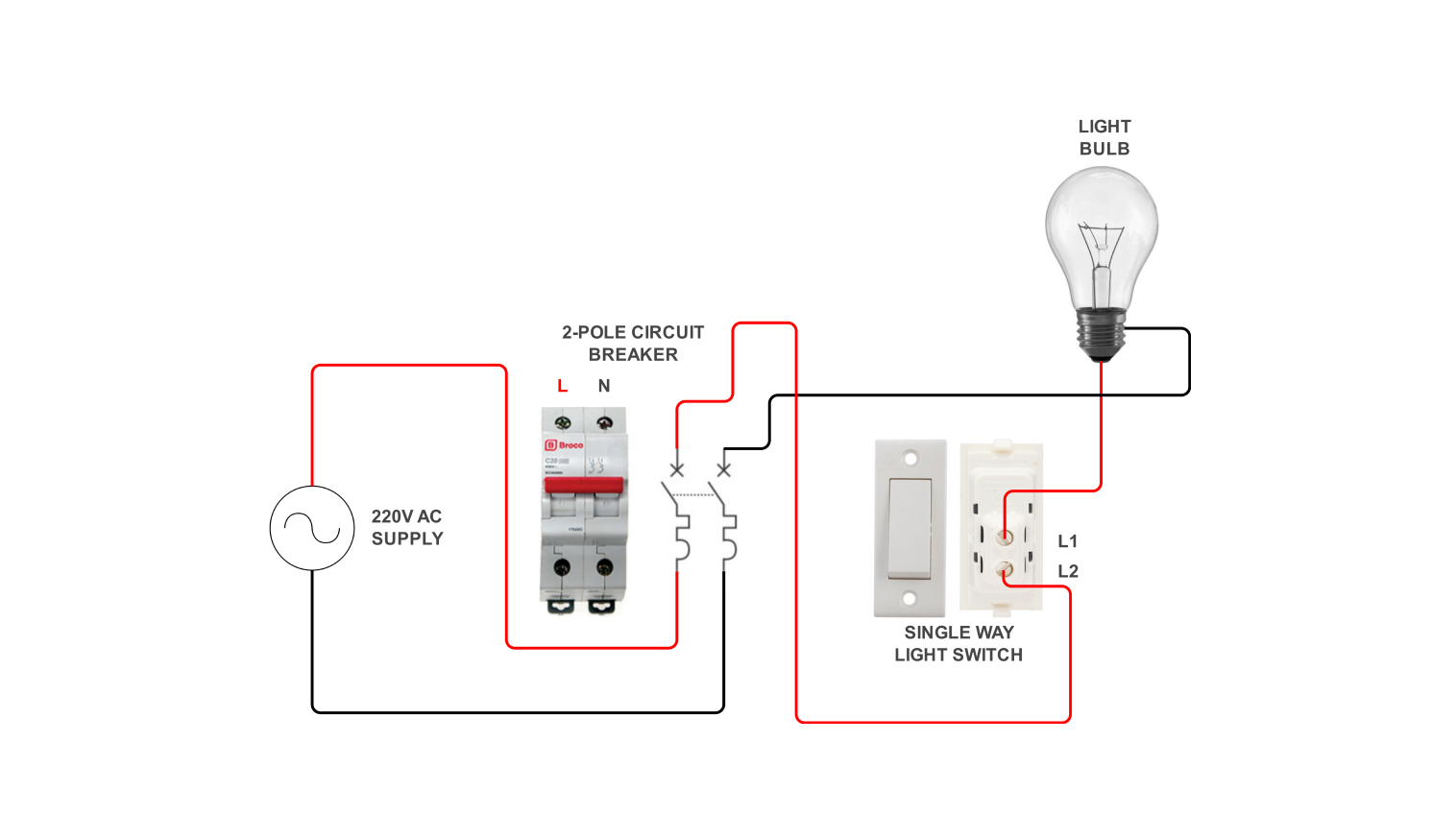- Templates
- wiring diagram templates
- Light switch wiring diagram
About this template
The circuit design is a basic yet primary constituent found in the lifestyle of both residential and commercial buildings and is utilized for regulating or managing the lighting facility taking into consideration the safety of the people in the premises.
Underneath the switch lies an element that has one pole, which serves as a plain switch that allows people to turn the light bulb on or off. This is a switch that is normally in the open position. It interrupts or completes the electricity circuit to control the flow of electricity in the light bulb.
As a result, the dual-function of single-pole switch and circuit breaker is a key tool that enables many people to control lighting in their homes. The switch gives users the simple opportunity to switch on/off the light source with one hand, no need to climb up a ladder or hire an expensive professional.
Besides the protection circuit, the circuit breaker is also a critical safety feature, offering protection from electrical faults that have the potential to pose significant risks to both the circuit and the building's occupants. This manner both serves whether systems are to be usable or safe within setting homes or businesses.
How to use the template
Click on Use this templateon the template to open it.
Once the template has opened, look for the Libraries panel on the left side. There you can find all the electrical components that you might want to add in. Drag and drop the needed symbols onto your canvas.
Under Electrical Engineering, expand the Basic Electrical category. You can swap components, adjust values, and even add labels to tailor the circuit. You can also change line styles, colors, and text fonts for better clarity.
Once you are satisfied with your wiring diagram, click File > Export, choose your preferred format (e.g., image file, PDF, SVG), and click Export to finalize your export process.
Benefits of the template in electrical design
The schematic drawing light switch circuit of your paper is very basic, but that does not mean it is not useful enough to learn the fundamental principles of electrical design, especially for simple lighting circuits. Here's how it can help:
- Accurate Installation:
- Troubleshooting:
- Compliance and Safety:
With a wiring diagram, it's easier to ensure that the light switch is installed correctly and safely. The diagram shows the specific connections needed, such as which wires are for power, which are for the light fixture, and which are for grounding. This reduces the risk of errors during installation.
When there are issues with a light switch or fixture, having a wiring diagram simplifies troubleshooting. Electricians can refer to the diagram to identify potential problem areas, such as loose connections or faulty wiring, and address them more efficiently.
Following a wiring diagram helps ensure compliance with electrical codes and standards, promoting safety in the installation process. Properly documented diagrams guide users in making correct and safe connections, reducing the risk of electrical hazards.
FAQs about wiring diagrams
-
Does a light switch cut power?
A light switch in some way does not even let the electricity flow to the fixture, hence turning it off. In common instances, the "hot-wire" is interrupted from feeding the light bulb by the flick or the switch. This neutral wire could be still connected to the fixture with the way of wiring.
-
What is the voltage of the light switch?
Voltage in light switch wiring varies according to wiring from different regions based on electrical system standards. However, the domestic circuit in North America runs at 120 volts AC. In Europe or other parts of the world, the usual voltage could be 230 volts AC.
-
What is a one-pole light switch?
The most often employed one-pole light switch in residential settings is a type of on/off. It has two terminals that manipulate the single light fixture on one spot simultaneously.
- Terminals:
- Functionality:
This first terminal is connected to the "hot" wire that provides the power source (circuit breaker), while the second terminal is connected to the "neutral" wire. One terminal is designed to attach to the switch leg, which contains the battery energy to the lamp fixture when the switch is turned on.
Flipping the switch interrupts the connection between the hot wire and the switch leg, preventing current flow to the light and turning it off. Turning the switch on completes the circuit, allowing electricity to flow to the light bulb and turning it on.
Related Templates
Get started with EdrawMax today
Create 210 types of diagrams online for free.
Draw a diagram free Draw a diagram free Draw a diagram free Draw a diagram free Draw a diagram free


